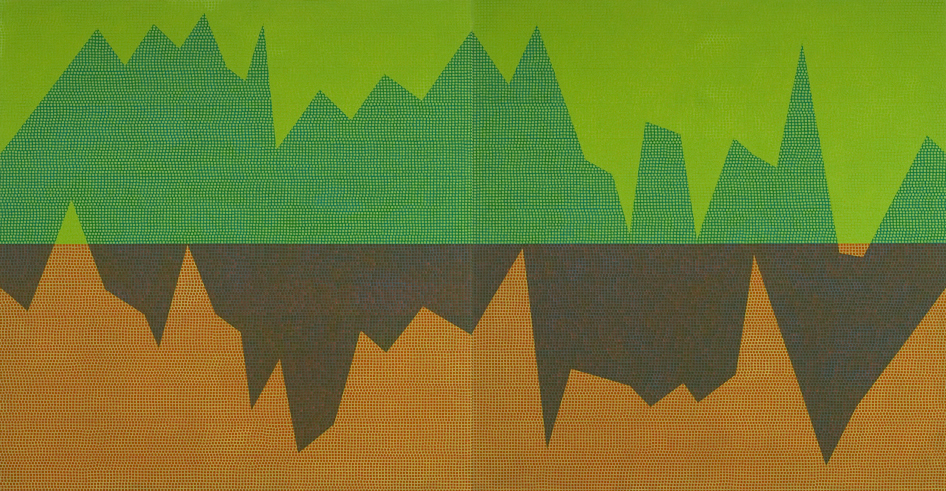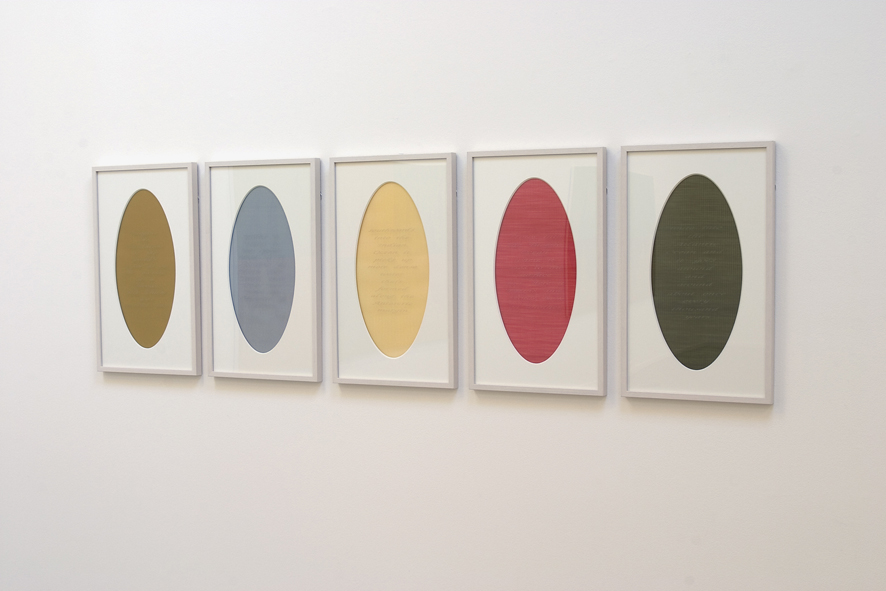
Anomalies Series 1
, 2005Oil paint, medium, pigment on linen
2 panels, 135 x 260cm
For the past decade or so, Helga Groves has made work fed by geographical extremes, transforming the details of Arctic light or the sub-tropical wet season, for instance, into paintings and objects marked by a delicate precision. While prompted by places, these works do not record distinguishing physical characteristics in the manner of landscape art, instead they take the local light as their starting point and, arguably, it is light—its colour, liquidity, sharpness, and fall—that has been the real subject of much of Groves’s work. As Julie Ewington aptly puts it, Grove understands how “light makes place.” 1
The works gathered here share many of the formal and material characteristics of Groves’s previous work while marking a subtle shift in the artist’s take on landscape. Stream Passage Cave #1 (2004) and Flowstones #1-4 (2004-5), both from the Subterranean Series, take their impetus from old stream caves, the dark home of stalagmites and stalactites; the five works from the Anomalies Series employ shapes drawn from scientific systems used to record environmental changes. Deep Ocean Currents (2004), a five-panel text piece, marks Groves’s first use of text, here a description of the thousand-year process by which the world’s ocean circulates the globe. This description has been sandblasted onto glass then layered over mounted panels of woven fishing line. Instead of the light-filled particularities that drove earlier work, in these works Groves takes landscape on a grand scale, pondering epochal time—the slow accretion of water-borne mineral deposits, the ocean’s course—and thinking of land/light/water in a far more generalizing manner.
Groves’s paintings have previously hinted at this in their bands of tiny squares, layered to suggest geological sedimentation and, by implication, the glacial patience required to produce them. In some of the works here, Groves uses the geometric shapes of a double graph divided by a horizon line, suggesting a geographical cross-section, or above- and below-water views. These shapes are new to her work, a departure from the strictly horizontal/vertical play that she has used to date. While the graphic line used by Groves derives from scientific recording systems—tracing, for example, rainfall or temperature fluctuations—here it takes on a new quality, describing abstract shapes that are not entirely devoid of representational possibility.
The Flowstones’ striking forms derive from drawings based on photographs Groves took of stalactites and stalagmites in South Australia. The shapes were router cut into two different coloured sheets of Perspex which were then overlaid—orange on purple– producing a colour otherwise unavailable in this medium. (Groves regularly layers colours this way in her painting.) The Flowstones’ material form is a gentle pun, “flowstone” being a geological term for rock deposited as a thin sheet by water’s precipitation. These doubled Perspex sheets are vertically symmetrical, each paired “image” and its mirror opposite produce forms that recall their underground origins, but they are also quietly weird. Look at the Flowstones, then look again at Stream Passage Cave #1 and the Anomalies Series and see how they hint at darker elements in these otherwise serene works. Translating forms made in darkness Groves can call up, abstractly, some of the unseen forces of the earth itself.
– Ingrid Periz
1 Julie Ewington, “Foreword”, Helga Groves: Selected Works, Melbourne, 2004.
Artist’s profile











